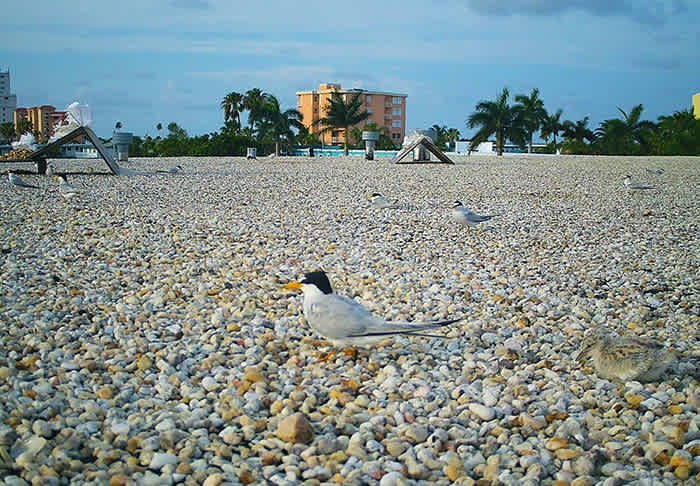JACKSONVILLE, Fla. – It may appear unusual, however a few of these shorebirds and seabirds you see on Northeast Florida’s seashores truly favor not to nest on our sandy shores, if they’ve a alternative.
Based on the Florida Fish and Wildlife Conservation Fee, species together with black skimmers, least terns, roseate terns and American oystercatchers more and more use gravel rooftops to nest and lift chicks.
Gravel resembles sand so far as consolation for the nesting birds, however the rooftops supply them extra safety from predators.
The FWC mentioned it’s grateful for companies that make their roofs out there for the birds somewhat than having the birds faraway from their property, as a result of many of the species which are utilizing the rooftops are thought of imperiled.
The FWC additionally inspired these with birds nesting on their rooftops to delay any routine upkeep or nonemergency repairs till after shorebird nesting season ends in September.
The FWC mentioned if shorebirds or seabirds are nesting in your roof, you possibly can assist them succeed by giving them house. You may also coordinate together with your FWC Regional Shorebird Biologist . To discover a regional shorebird biologist close to you, go to MyFWC.com/Shorebirds and click on on “Shorebird Nest Dates and Contacts.”
Dwindling choices
Elizabeth Filippelli, the conservation director for Duval Audubon Society, mentioned that, sadly, in Northeast Florida, the birds are working out of these rooftop choices as a whole lot of companies change their roofing model.
“Due to a whole lot of the event that now we have in our state, the shorebirds are having a tough time discovering a terrific place to nest, they usually wish to nest in gravel,” mentioned Filippelli, who has been with the Duval Audubon Society for 3 years.
Filippelli mentioned these birds are essential for the environment.
“Birds basically have a symbiotic relationship with people,” Filippelli mentioned. “They assist with biodiversity, they assist with seed distribution, they assist with cleansing up. Vultures and turkey vultures clear up issues that we don’t like to wash up.”
Nesting season
The timeline varies by county, however now till Sept. 1 is nesting or breeding season for the birds in our News4JAX viewing space.
Due to the dwindling choice of gravel rooftops, extra of the shorebirds and seabirds in Northeast Florida nest on the shoreline — wherever with sand.
Filippelli mentioned a few of these locations the place folks may even see these birds probably the most embrace Huguenot Memorial Park, and the Little Talbot Island, Large Talbot Island and Anastasia state parks.
Since extra of the birds are anticipated to be seen at floor degree as a substitute of rooftops in Northeast Florida, Filippelli mentioned folks want to pay attention to their environment.
“Our eyes may not even see the eggs,” she warned.
She inspired shore guests to maintain a distance between themselves and the birds.
“You positively don’t need to fluster the birds as a result of they’re already taking good care of their children,” she mentioned. “Identical to us, after we are taking good care of children, we don’t need to be interrupted.”
If the birds get spooked and need to fly away from their nests, their younger are left susceptible to predators and the weather, Filippelli warned.
She mentioned the Duval Audubon Society goals to attach folks with nature, whereas working with communities to guard birds and educating folks on the hazards of sunshine air pollution and window reflection for birds.
To teach extra folks about this, the society is internet hosting coaching periods for volunteers, beginning Friday. If you sign up, Filippelli mentioned, you’ll discover ways to shield the birds and different vital wildlife.
Copyright 2025 by WJXT News4JAX – All rights reserved.

